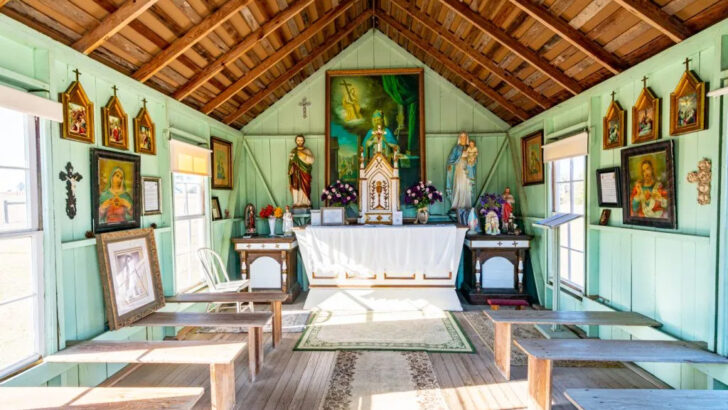Synodality and the Recovery of Vatican II: A new way for Catholics
edited by Stephen J. McKinney, Thomas O’Loughlin & Beáta Tóth (Messenger Publications, €25.00)
As the title suggests this is a book with a studied purpose, but whose intentions have been caught up with by the passage of events in a way the editors could not have expected.
In the continuing troubles in Kenya after its recent elections, the laity in the largely Catholic country have effectively revolted against the Church leaders.
They accused the hierarchy of being more interested in their own power, and said they had met with members of the government, and accepted actual “brown paper envelopes”.
There were demonstrations in the streets. The result was a back down by the clergy to appease the people who are in very straitened circumstances. Special masses have been offered for those injured in the events. But it is a question of whose voice will dominate in public life from now on, the view of the hierarchy or the demands of the people in the pews (or rather out in the streets). From an Irish point of view this seems to be an unusual, not to say extraordinary development.
Impact
What has happened must have an impact on the developing notion of Synodality. Reports about the course of this consultation seem to say little about what was happening in Africa, South America or Asia, let alone a country like Canada. Have we been looking too closely at ourselves alone?
For some time we have been told, often by very traditionally-minded bishops, that the future of the Church depends on Africa as well as South America. What has developed in Kenya, a largely Christian country, will be a surprise to many, but a surprise with a bearing on the future.
Here in Ireland Catholics may perhaps see the progress of the movement in the light of their society and its development. But the way in Ireland is not the way everywhere. As I write this the conflict in Kenya being played out over the last month must have some bearing on what is being discussed in these pages.
This book contains some seventeen essays, by a very varied team brought together by the three editors. Stephen McKinney is Professor of Pedagogy, Praxis and Faith at the University of Glasgow. His interests are in the interface between theology and Catholic education.
Thomas O’Loughlin is professor emeritus of historical theology at the University of Nottingham. He has written extensively on the history and theology of worship and currently teaches for the Mirfield Liturgical Institute.
Beáta Tóth is Associate Professor and Chair of the Department of Systematic Theology at Sapientia College of Theology, Budapest.
If this new process of synodality can recover those emotions of six decades ago it will be a truly effective achievement”
The main theme of the book’s assorted contribution is clearly stated in the title: the recovery of Vatican II. For those who lived through those years between 1962 and 1965, they represented a period of hope and rising expectation that changed lives and outlooks. For some it was like living in a new apostolic age, with a Church in formation rather than reformation.
However, in the decades since, the Council and its universal decisions have taken a lot of criticism.
If this new process of Synodality can recover those emotions of six decades ago it will be a truly effective achievement.
In his essay Thomas O’Loughlin, for instance, suggests that Synodality requires a focus on local communities, “but are we ready for what that entails.”
He considers that thoughts of a mass church will have to give way literally to a very local church. He thinks that the number of people that can keep a local unit functioning is about 100-150.
I was very struck by this. When I lived in the City of London (the actual ancient Roman settlement more or less), I was astonished to see, looking out from the balcony of our flat over the streets below, just how many parish churches there were in view (all Anglican, of course). Below our balcony was St Giles Cripplegate, where Milton was buried, around the corner was Silver Street where Shakespeare lived for a short, but significant, time.
Medieval
I reckoned then that each parish church in medieval London must have had only about 200 adult parishioners. In the distance, however, was Wren’s St Paul’s Cathedral. The Old St Paul’s was a victim of the Great Fire. Old St Paul’s was huge and would have taken every Christian in London at the time.
A while ago I suggested to an Irish historian writing about the past and future of Dublin’s parishes that rather than uniting parishes, the aim should not be to make them even larger; we should aim at breaking them down into worshiping units of about 200 people.
I feel that the person involved was not impressed with this idea. Yet here it is again, suggested by a very different approach by another historian.
Display
But alas, what so many people seem to see is a need for a church of massive display.
These essays suggest that there are many ideas yet to explore. The events in Africa suggest that the laity may well be ready to take things into their own hands, in very local actions.
We have perhaps exciting days ahead of us, days both of change and recovery, in which this book (among others) will play an important part.
But in the spirit of Vatican II, the Church should aim not for reformation, but for formation; it should not think about changing what we have, but recovering what the Gospels suggest Jesus wants his followers to have.


 Peter Costello
Peter Costello St Martin’s in the Texas Hill Country, one of the world smallest functioning churches.
St Martin’s in the Texas Hill Country, one of the world smallest functioning churches. 